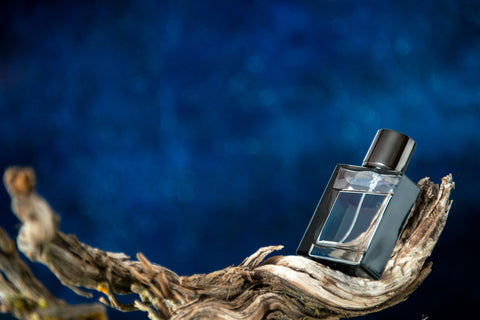Pheromone perfumes have garnered significant attention in recent years, claiming to enhance attractiveness and social interactions through the use of synthetic human pheromones. While the topic remains controversial, exploring the motivations behind their use among men can provide insight into their perceived benefits and potential impact on human behavior.
Factors Influencing Men's Interest in Pheromone Perfumes
Perception of effectiveness
- Marketing and advertising: Analyze the powerful influence of marketing campaigns surrounding pheromone perfumes. Explore how targeted advertising strategically utilizes messages like "scientifically proven," "unlock your natural attraction," and celebrity endorsements to create a perception of effectiveness. Discuss the potential use of selective scientific evidence, testimonials presented as unbiased reviews, and suggestive visuals to further reinforce perceived efficacy.
- Limited scientific knowledge: Explore the gap between marketing claims and the limitations of current scientific research on human pheromones. Discuss how a lack of conclusive evidence can leave individuals susceptible to believing marketing narratives due to a desire for a quick fix or a lack of awareness of the scientific context.
-
Confirmation bias: Analyze the possibility of confirmation bias influencing men's perception of effectiveness. This bias describes the tendency to seek out or interpret information that confirms their pre-existing beliefs. In this context, men who try pheromone perfumes might be more likely to attribute positive social interactions to the product, even if these outcomes could be due to other factors.
Desire for increased attractiveness
- Social pressures and cultural expectations: Explore the potential influence of societal norms and expectations around male attractiveness. Discuss how cultural emphasis on physical appearance can create pressure for men to conform to specific beauty standards, leading them to seek methods of enhancing their attractiveness. This could include societal pressures regarding body image, fashion sense, and perceived "masculinity."
-
Competition and insecurity: Analyze the potential role of competition and insecurity in driving men's interest in pheromone perfumes. Consider how social situations involving potential romantic or professional rivals might contribute to a desire to gain a perceived advantage through purported attractiveness enhancements.
Confidence and self-esteem
- Placebo effect and self-fulfilling prophecy: Discuss the possibility that even if pheromone perfumes don't have a direct biological effect on others, the belief in their effectiveness might act as a placebo. This can lead to increased confidence and self-assurance due to the perceived change in outward perception, potentially influencing behavior in a way that fosters positive social interactions.
-
Psychological association and self-image: Analyze how the act of wearing a pheromone perfume itself might be associated with feeling more confident and attractive. The psychological association with the product could lead men to feel more empowered and project a more confident demeanor, regardless of its actual impact on others.
Personal experiences and anecdotal evidence
- Word-of-mouth and online communities: Explore the influence of personal experiences and anecdotal evidence shared online or through word-of-mouth. Discuss how positive personal anecdotes from friends, acquaintances, or online communities can create a perception of effectiveness, even if they lack scientific basis. This can lead individuals to believe their own experiences will be similar based on these anecdotal accounts.
- Selective memory and confirmation bias: Analyze the potential for selective memory and confirmation bias to influence personal experiences. Individuals might be more likely to remember positive social interactions while using pheromone perfumes and attribute them to the product, while overlooking less positive encounters.
Understanding Pheromones and Their Role in Attraction
Definition and types of pheromones
-
Definition: Introduce pheromones as chemical signals released by an organism that influence the behavior of other individuals within the same species. Emphasize that pheromones are distinct from hormones, which act internally within the body.
- Types of pheromones based on function:
- Primer pheromones: Discuss how these influence development and physiological processes, such as triggering puberty or ovulation in some animals.
- Releaser pheromones: Explain how these trigger immediate behavioral responses, such as attracting mates, signaling alarm, or marking territory.
-
Signaler pheromones: Describe how these convey information about an individual's characteristics, such as age, sex, health, or social status.
-
Examples of pheromones in the animal kingdom: Provide specific examples of pheromones and their functions in different animal species, such as the sex pheromones used by moths to attract mates or the alarm pheromones used by ants to warn others of danger.
The existence and function of human pheromones
-
Scientific debate: Discuss the ongoing debate surrounding the existence and function of human pheromones. Explain how researchers struggle to isolate and study potential human pheromones due to the complexity of human behavior and the influence of other factors like environment and individual differences.
- Arguments for the existence of human pheromones:
- The Vomeronasal Organ (VNO): Explain the presence of the VNO, a vestigial organ in humans located near the nose, which some believe may be responsible for detecting pheromones. However, there is ongoing debate about its functionality in humans.
- Studies suggesting potential effects: Briefly mention some studies suggesting potential effects of human pheromones on behavior, such as influencing menstrual synchrony in women or perceived attractiveness in men. However, these studies often have limitations and require further research for conclusive evidence.
- Arguments against the existence of significant human pheromones:
- Lack of conclusive scientific evidence: Emphasize the lack of strong, replicated scientific evidence to support the existence of human pheromones with clear and consistent effects on behavior in controlled settings.
-
Alternative explanations for observed effects: Discuss how observed effects in studies, such as changes in mood or behavior, can often be attributed to other factors like visual cues, social context, or individual biases, challenging the claim that pheromones were the sole influencing factor.
Popular claims of pheromone perfumes
-
Advertised benefits: Analyze the various benefits advertised by manufacturers of pheromone perfumes, including:
- Increased attractiveness and desirability: Explain how these products claim to enhance attraction to others by mimicking or amplifying natural human pheromones.
- Improved confidence and self-esteem: Discuss how some products claim to boost confidence and self-esteem by influencing how others perceive the wearer.
-
Enhanced social interaction and communication: Explore how certain brands advertise enhanced social interaction and communication, suggesting pheromones can improve social skills by influencing others' behavior.
- Critical evaluation of claims: Emphasize the importance of critically evaluating these claims due to the lack of robust scientific evidence supporting their effectiveness.
- Potential ethical concerns: Briefly mention ethical concerns surrounding the potential manipulation of human behavior using unproven methods, especially when targeting individuals' insecurities or social anxieties.
Potential Benefits and Drawbacks of Using Pheromone Perfumes
Potential benefits
-
Improved social interactions: While the evidence for a direct effect on social interaction is limited, some research suggests potential benefits worthy of further exploration. For example, studies investigating androstadienone, a compound found in human sweat, have shown mixed results:
- Increased sociability: Some studies suggest androstadienone might increase a person's perceived friendliness and approachability, potentially leading to more positive initial social interactions.
-
Limited generalizability: However, it's crucial to note that these studies often involve small sample sizes and controlled environments, limiting their generalizability to real-world social situations. Additionally, individual differences play a significant role in how people perceive and respond to social cues.
-
Increased confidence (Placebo effect): Regardless of their actual influence on others, pheromone perfumes could potentially work through a placebo effect. If individuals believe the product enhances their attractiveness or social skills, they might experience increased confidence and self-assurance, leading to more positive social interactions. This highlights the power of perception and self-belief in social situations.
-
Increased self-esteem (Psychological association): The act of wearing a pheromone perfume itself might be psychologically associated with feeling more confident and attractive. This association could contribute to a positive self-image, even if the product has no direct impact on others. It's important to understand that genuine self-esteem comes from internal factors, not external enhancements.
Potential drawbacks
- Ethical concerns: The potential for manipulating human behavior through unproven methods raises ethical concerns. If pheromone perfumes do have an effect, they could be used in unethical ways to exploit individuals, especially those struggling with social anxiety or low self-esteem, further perpetuating harmful societal pressures and insecurities.
- Lack of conclusive scientific evidence: As emphasized earlier, there is currently no conclusive scientific evidence to support the claims that pheromone perfumes directly influence attraction, confidence, or social interactions in humans. Relying on unproven methods can create unrealistic expectations and potentially lead to disappointment or frustration.
-
Misinterpretation of signals: Even if pheromone perfumes had a demonstrable effect, there's a risk of misinterpreting these signals. The intended effects might be misconstrued, leading to confusion or discomfort in social interactions. Additionally, relying solely on external methods to enhance social skills or attract others can hinder the development of genuine connections and personal growth.
Cost and marketing strategies
- High cost: Pheromone perfumes are often significantly more expensive than traditional fragrances. This raises concerns about whether the high cost reflects the actual value of the product or is primarily driven by marketing strategies and the perception of a "magic bullet" solution.
- Misleading marketing: Many pheromone perfume companies utilize aggressive marketing tactics that exploit insecurities and social anxieties by making unsubstantiated claims about the product's effectiveness. This can be misleading and unethical, potentially taking advantage of individuals seeking solutions to complex social and personal challenges.
- Ethical implications of marketing: The focus on external manipulation through unproven methods, often targeted at vulnerable individuals, raises ethical concerns surrounding the marketing of pheromone perfumes. Responsible marketing practices should prioritize promoting healthy ways to build genuine connections and personal confidence.

Alternative Approaches to Enhancing Attractiveness and Social Skills
Instead of seeking external solutions like pheromone perfumes to enhance attractiveness and social skills, individuals can prioritize developing genuine personal qualities and engaging in authentic social interactions.
Importance of self-care and positive body image
- Developing self-esteem: Focus on building self-esteem through positive self-talk, self-acceptance, and cultivating a sense of self-worth based on personal values and accomplishments, not solely on external validation.
- Healthy body image: Practice self-care and develop a healthy body image by prioritizing physical and mental well-being, engaging in activities you enjoy, and appreciating your unique body for its capabilities and strengths.
-
Positive self-expression: Express yourself authentically through personal style, hobbies, and interests that showcase your individuality and interests.
Building genuine connections
- Genuine communication: Focus on developing effective communication skills, including active listening, expressing yourself clearly, and showing genuine interest in others. Communication fosters deeper understanding and connection, enriching social interactions.
- Shared interests: Finding common ground with others through shared interests, hobbies, and activities can create a sense of connection and belonging. Engaging in activities that spark joy and excitement naturally attracts others with similar interests.
-
Building meaningful relationships: Invest time and effort in cultivating genuine relationships based on respect, mutual trust, and shared experiences. Focus on building friendships and connections that offer emotional support, shared laughter, and a sense of belonging.
Communication and social skills development
- Practice and social interaction: Building social confidence comes through practice and engaging in positive social interactions. Step outside your comfort zone by joining social groups, attending events, and engaging in conversations with new people.
- Social skills development: Seek opportunities to develop your social skills through activities like workshops, classes, or volunteering. These opportunities can provide a safe space for practice, feedback, and learning from others.
-
Assertiveness and boundaries: Develop healthy assertiveness to express your needs and opinions confidently while respecting the needs and boundaries of others. This fosters healthy communication and builds trust in relationships.
Remember:
- Focusing heavily on perceived "attractiveness" can be fleeting and superficial. True connection and social success come from developing genuine qualities, fostering positive communication, and investing in relationships built on shared experiences and mutual respect.
- These strategies require dedication and effort but offer sustainable and genuine ways to enhance your social skills, build confidence, and attract others through your unique strengths and personality.
By prioritizing personal growth, authentic communication, and genuine connection, individuals can build fulfilling social interactions and positive relationships without relying on unproven methods like pheromone perfumes.
Conclusion
Summarize key points- This exploration has examined the potential motivations behind men's use of pheromone perfumes, including the desire to increase attractiveness, confidence, and social interaction.
- It is crucial to acknowledge the lack of conclusive scientific evidence supporting the claims associated with these products. Additionally, potential ethical concerns arise when considering the manipulation of human behavior through unproven methods.
Importance of critical evaluation
Instead of relying on external solutions like pheromone perfumes, individuals are encouraged to:
- Critically evaluate the claims surrounding these products and avoid falling prey to misleading marketing tactics.
- Prioritize genuine connections built on communication, shared interests, and respect over superficial attempts to enhance attractiveness.
- Focus on personal growth through self-care, communication skill development, and building confidence through authentic interaction.
Remember, genuine connections and social success stem from developing your unique qualities, fostering positive communication, and investing in relationships built on shared experiences and mutual respect.
Future directions
While the current understanding of human pheromones remains limited, there is ongoing research in this field.
- Future research: Exploring the potential role of human pheromones in a controlled and ethical manner can offer valuable insights into human behavior and communication.
- Implications: This research could potentially contribute to a deeper understanding of human social interactions, potentially influencing various fields, including psychology, sociology, and relationship dynamics.
It is important to note that any future research must be conducted ethically and responsibly, prioritizing the safety and well-being of participants while respecting individual autonomy and avoiding the exploitation of any individual or group.
By approaching pheromone perfumes with a critical eye, prioritizing personal growth, and engaging in genuine social interactions, individuals can navigate the complexities of social interaction and build meaningful connections in a sustainable and authentic manner.




